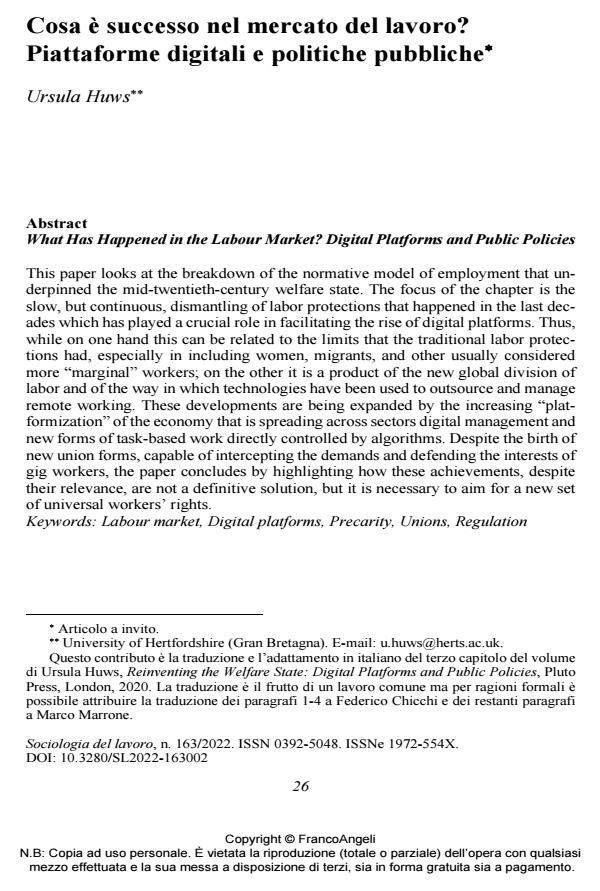What Has Happened in the Labour Market? Digital Platforms and Public Policies
Journal title SOCIOLOGIA DEL LAVORO
Author/s Ursula Huws
Publishing Year 2022 Issue 2022/163
Language Italian Pages 22 P. 26-47 File size 234 KB
DOI 10.3280/SL2022-163002
DOI is like a bar code for intellectual property: to have more infomation
click here
Below, you can see the article first page
If you want to buy this article in PDF format, you can do it, following the instructions to buy download credits

FrancoAngeli is member of Publishers International Linking Association, Inc (PILA), a not-for-profit association which run the CrossRef service enabling links to and from online scholarly content.
This paper looks at the breakdown of the normative model of employment that underpinned the mid-twentieth-century welfare state. The focus of the chapter is the slow, but continuous, dismantling of labor protections that happened in the last decades which has played a crucial role in facilitating the rise of digital platforms. Thus, while on one hand this can be related to the limits that the traditional labor protections had, especially in including women, migrants, and other usually con-sidered more "marginal" workers; on the other it is a product of the new global di-vision of labor and of the way in which technologies have been used to outsource and manage remote working. These developments are being expanded by the in-creasing "platformization" of the economy that is spreading across sectors digital management and new forms of task-based work directly controlled by algorithms. Despite the birth of new union forms, capable of intercepting the demands and de-fending the interests of gig workers, the paper concludes by highlighting how these achievements, despite their relevance, are not a definitive solution, but it is neces-sary to aim for a new set of universal workers’ rights.
Keywords: Labour market, Digital platforms, Precarity, Unions, Regulation
Ursula Huws, Cosa è successo nel mercato del lavoro? Piattaforme digitali e politiche pubbliche in "SOCIOLOGIA DEL LAVORO " 163/2022, pp 26-47, DOI: 10.3280/SL2022-163002